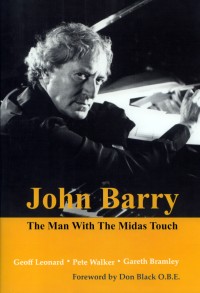Learning to Like Light Music
By David Barton
One thing which I’m sure is periodically on our minds, is whether our enthusiasm for light music will transfer to another generation of musicians and listeners. Many of you will know that I’ve been giving music lessons for over 11 years; a lot has changed in that short space of time, not least the pieces which are now considered ‘acceptable’. Instrumental exams have, in the past, been mainly classical-based, but over the past few years, we’ve seen a real ‘opening-up’ of the repertoire and there’s a strong possibility that light music might benefit from this.
Our exam syllabuses now feature a wide range of light pieces and composers, and consequently, albeit from an unlikely source, learners are now exposed to a far greater variety of music. If you did music exams as a child, rest-assured, the ‘old standards’ still appear, but you’d be surprised how breadth of repertoire has widened. Musicians are benefitting too, with previously out-of-print sheet music now being reissued as these pieces appear.
One area which has now become far more accepted is that of arranging. Several exam boards now actively commission arrangements, and more and more are beginning to appear, including: Warren and Gordon’s Chattanooga Choo-Choo (Piano, Grade 1); Gershwin’s Do It Again (Piano, Grade 7) and Summertime (Viola, Grade 3); Irving Berlin’s Puttin’ on the Ritz (Violin, Grade 3); Kurt Weill’s September Song (Viola, Grade 5); Leroy Anderson’s Fiddle-Faddle (Viola, Grade 8); Ron Goodwin’s 633 Squadron (Horn, Grade 3); and Miles Davis’ So What? (Double Bass, Grade 5). As you can see, there are some pretty odd instrument combinations!
Composers associated with the RFS are well-represented too, with: Paul Lewis’ Blue Fiver (Harp, Grade 6); David Snell’s Toccata (Harp, Grade 8); and Philip Lane’s Malagveña (Clarinet, Grade 5) all featuring.
We probably know William Alwyn best for his Festival March, and his music continues to appear with his Sonatina (Violin, Grade 8) and Crépuscule (Harp, Grade 7). Most famous for his piece The Land of the Mountain and the Flood, but also an established composer for Chappells, Buxton Orr features with his Diatonic Preludes (Harp, Grade 4) and several pieces in the brass section. Another library music composer to feature is Gilbert Vinter, with his Playful Pachyderm (Bassoon, Grade 8) and Reverie (Bassoon, Grade 7).
Several other composers who can justifiably claim an association with light music include: Henry Mancini’s Charade (Viola, Grade 2) andinevitably The Pink Panther (Cello, Grade 2); Geoffrey Burgon’s Dawn (Harp, Grade 2); Madeline Dring’s Italian Dance (Oboe, Grade 7); Paul Reade’s Suite from The Victorian Kitchen Garden (Clarinet, Grade 5); and George Shearing’s Lullaby of Birdland (Euphonium, Grade 5).
If you’ve got children or grandchildren taking music exams, ask them what they’re playing; some of their choices may be more familiar than you might think.
This article first appeared in Journal Into Melody, issue 194 December 2012


